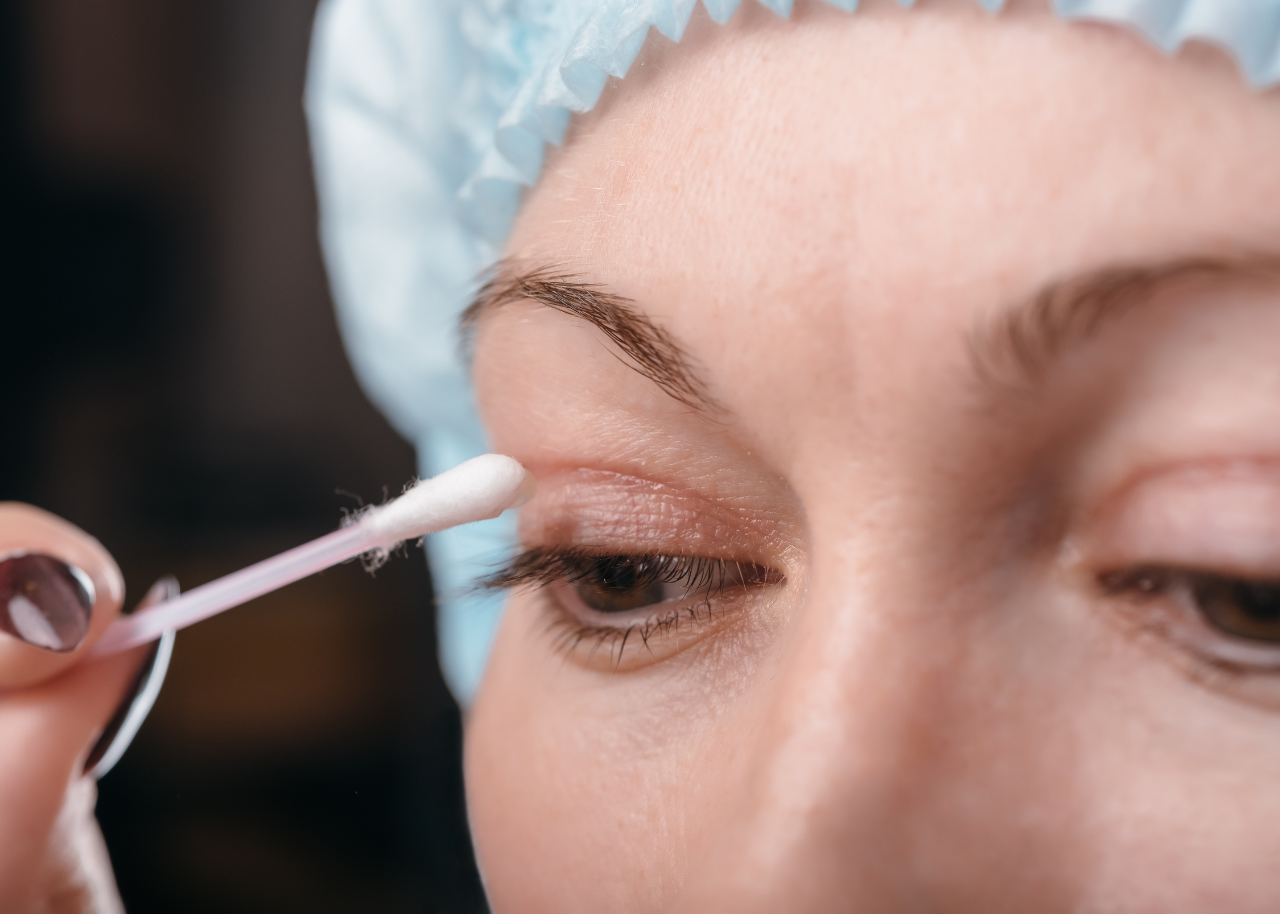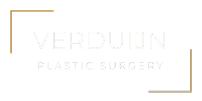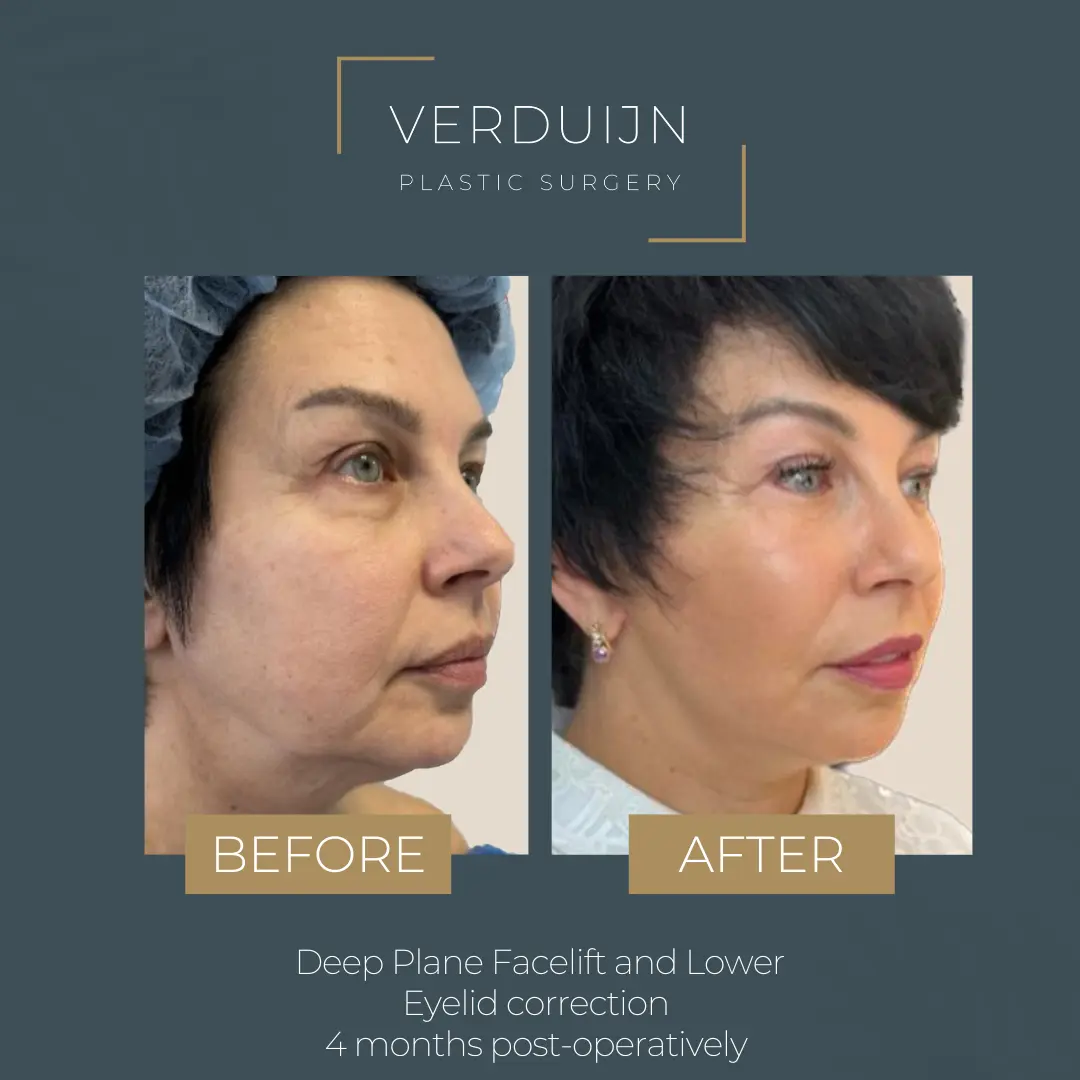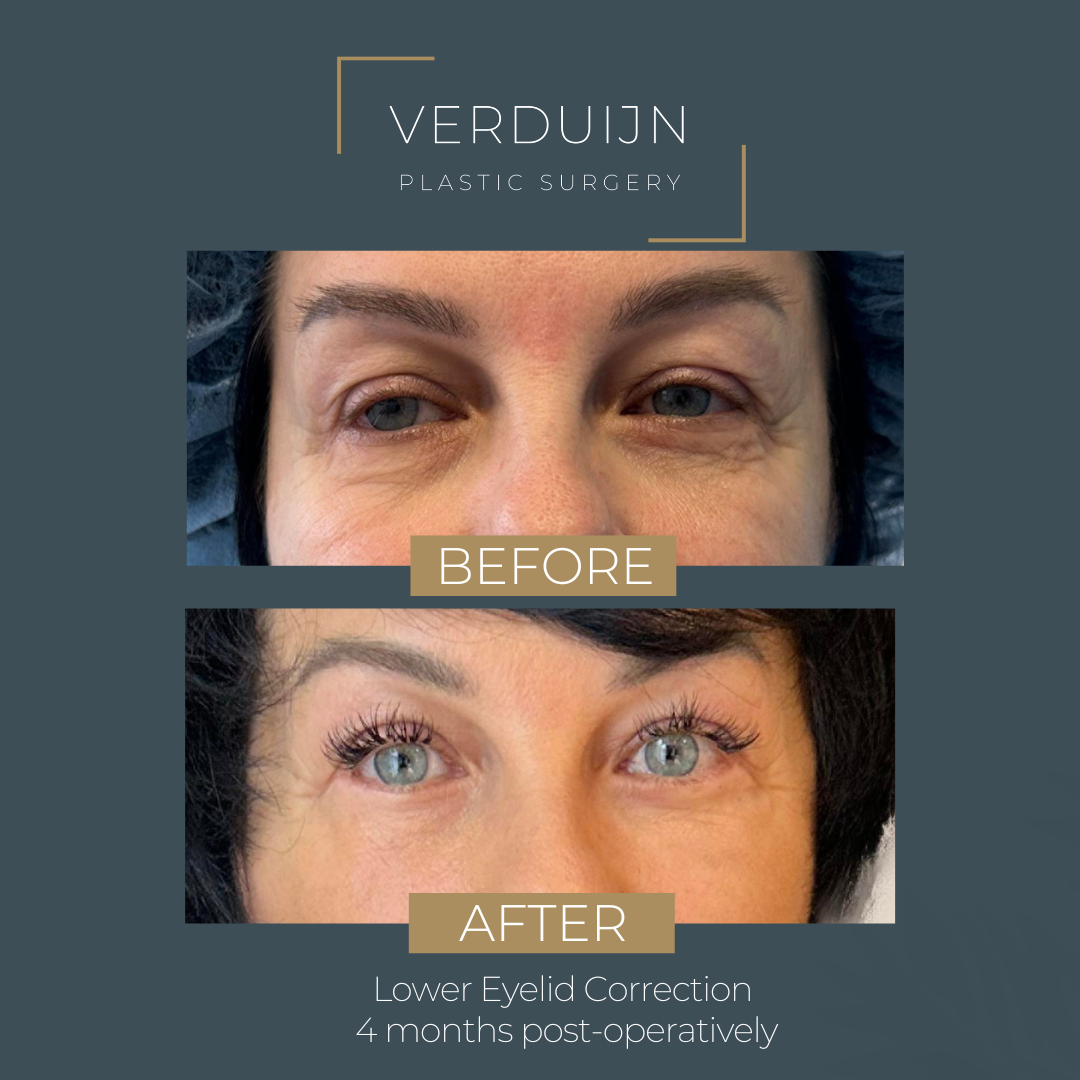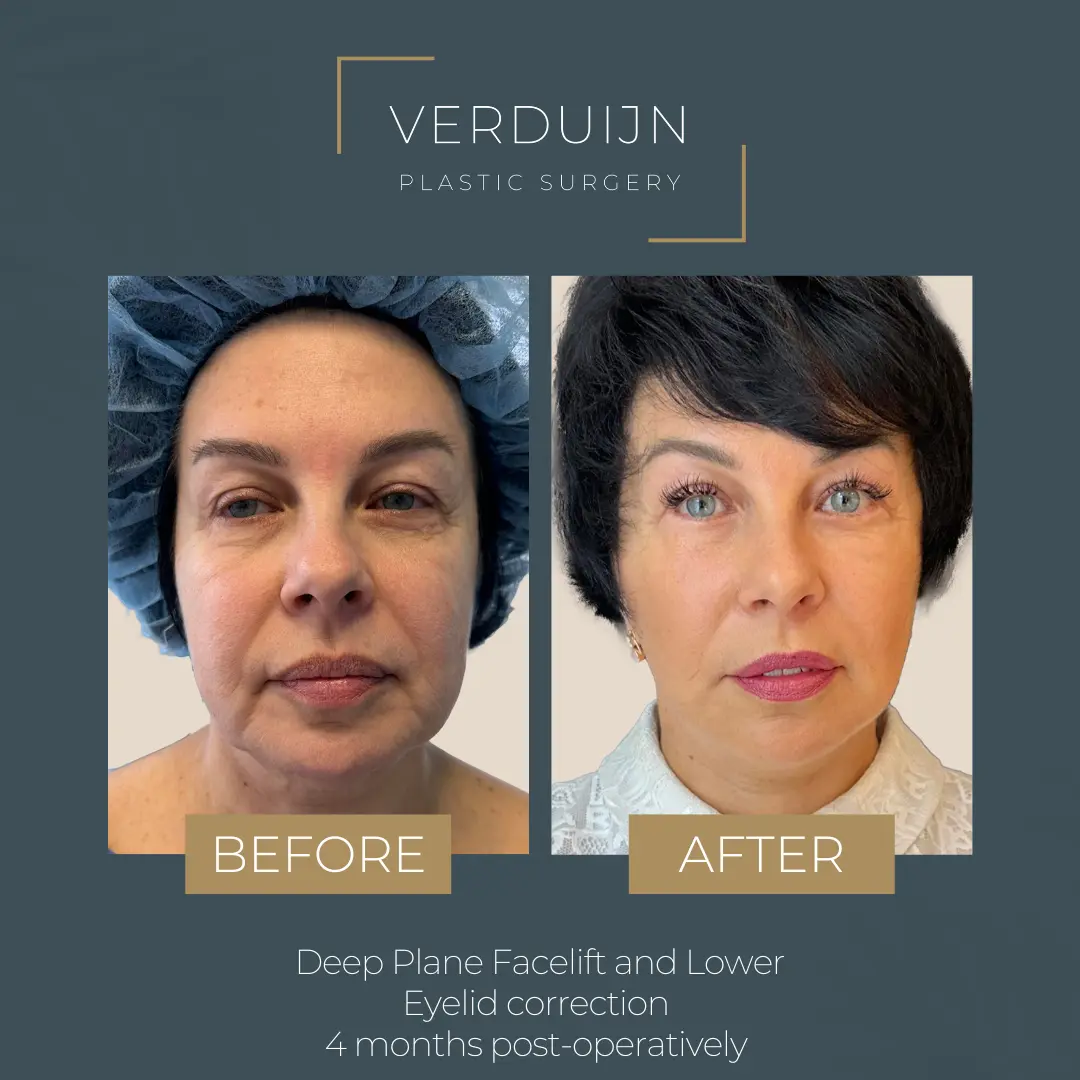Oogleden en Wenkbrauw
Wij voeren zowel bovenooglid- als onderooglidcorrecties uit, evenals ptosiscorrecties die volledig worden afgestemd op jouw wensen. Mijn doel is om uiterst natuurlijke resultaten te creëren; het draait allemaal om het verbeteren van de uitstraling én de functie van je ogen.
Dr. Verduijn combineert zijn expertise als hoofd Plastische Chirurgie LUMC met een artistiek oog voor natuurlijke verjonging.

Waarom een bovenooglidcorrectie
Ontdek een hernieuwde blik met een bovenooglidcorrectie,ook wel blefaroplastiek genoemd. Een bovenooglid correctie is gericht op hetverjongen van de boven oogleden. Het corrigeert een ongewenste, vermoeide ofverdrietige uitdrukking. Een ooglidcorrectie is een veelzijdige procedure dieslappe of overtollige huid, opgezwollen wallen en zelfs een gezichtsveldbeperking door hangende oogleden behandelt.
Ik voer deskundige bovenooglidcorrecties en ptosiscorrecties uit met precisie diezijn afgestemd op uw wensen. Mijn missie is het creëren van onberispelijknatuurlijke resultaten. Het draait hierbij allemaal het verbeteren van hetuiterlijk en de functie van uw ogen!
ONZE Facelift behandelingen
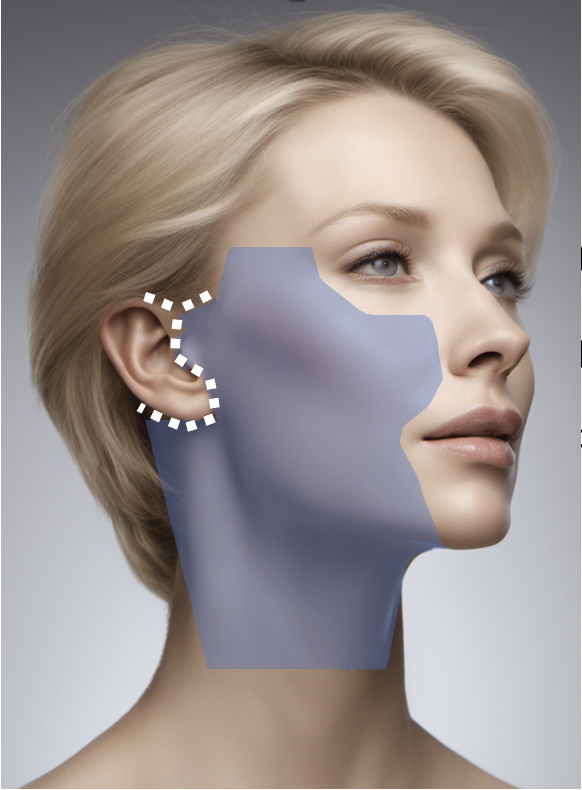
Bovenooglid correctie
Ervaar deze effectieve maar minimaal invasieve methode die je uiterlijk verjongt en verfrist. De Bovenooglid correctie vermindert het hangen van het bovenooglid en corrigeert overtollige huid en volume van het boven ooglid.Via een discrete incisie in de ooglidplooi verwijder of herplaats ik precieze hoeveelheden vet, spier en losse huid, die allemaal bijdragen aan het hangen van de bovenoogleden. Deze behandeling kan onder lokale verdoving worden uitgevoerd, herstelt snel en geeft een jeugdige uitstraling.

Ptosis correctie
De Ptosiscorrectie van het bovenooglid is een subtiele minimaal invasieve techniek waarbij de ooglidrand naar een hogere positie wordt verplaatst. Dit komt door een verslapte spier waardoor de ooglidrand te laag hangt, meestal overeen deel van de pupil. Via de bovenste ooglidplooi wordt deze spier die het bovenste ooglid optilt zorgvuldig strakker gemaakt. Hierdoor verbetert het gezichtsveld en wordt de blik en het uiterlijk jeugdiger en frisser.Het kan worden gecombineerd met een correctie van het bovenooglid onder lokale verdoving, met dezelfde incisie.
Ideale kandidaat
Goede kandidatenvoor een bovenooglidcorrectie zijn mannen en vrouwen die tekenen vanveroudering in hun gezicht vertonen, of die er vermoeid of verdrietig uitzien,terwijl ze zich daar niet zo bij voelen.
Beslissen of je een bovenooglid correctie nodig hebt, is een persoonlijke keuze die afhangt van je persoonlijke zorgen en wensen. Toch kunnen verschillende veelvoorkomende tekenen en uiterlijke kenmerken erop wijzen dat een bovenooglidcorrectie gunstig voor u kan zijn.
1. Hangende bovenoogleden:Als uw oogleden gaan hangen of zakken, waardoor u er voortdurend moe, boos of verdrietig uitziet, kan een ooglidcorrectie helpen om een jeugdiger en frisser uiterlijk te krijgen.
2. Verminderd zicht: Ernstige hangende oogleden kunnen uw zicht belemmeren, vooral het bovenste gezichtsveld. Een correctie van het bovenooglid kan helpen het oog meer te openen en uw gezichtsveld te verbeteren.Als de rand van het bovenste ooglid gedeeltelijk op uw pupil ligt, is een ptosiscorrectie nodig.
3. Verlangen naar een frisse en jeugdigere uitstraling: Als u ontevreden bent over uw huidige uiterlijk en een jeugdiger, energieker en alerter uiterlijk wilt, kan een correctie van het bovenooglid of onderooglid, of een combinatie, een transformerende procedurezijn.
4. Revisie-ooglidcorrectie: In geval van onbevredigende resultaten of complicaties na een eerdere ooglidcorrectie, zoals asymmetrie, of littekenproblemen of een onnatuurlijke positie.
Het is cruciaal om een gekwalificeerde en ervaren plastisch chirurg te raadplegen om te bepalen of u een geschikte kandidaat bent voor een ooglidcorrectie. Tijdens het consult zal ik uw gezichtsanatomie beoordelen, uw zorgen en verwachtingen bespreken, en de meest geschikte aanpak aanbevelen om uw gewenste resultaten te bereiken.
De ideale patiënt verkeert in goede gezondheid en vermijdt alcohol en tabak voor en na de ingreep.
Herstelproces
Het begrijpen van het herstelproces is essentieel om u voor te bereiden op uw bovenooglid correctiE.
Direct na de operatie: U kunt lichte zwelling, blauwe plekken en ongemak ervaren, wat kan worden behandeld met voorgeschreven medicijnen. De hechtingen worden na 7 dagen verwijderd.
Eerste week: Rust is cruciaal tijdens deze periode. Houd uw hoofd omhoog en vermijd zware activiteiten. Gevoelloosheid in het operatiegebied is normaal.
2-4 weken: De meeste mensen gaan binnen deze periode weer aan het werk en hervatten normale activiteiten, maar intensieve inspanning moet worden uitgesteld.
4-6 weken: Zwelling en blauwe plekken zullen blijven afnemen en u zult aanzienlijke verbeteringen merken.
3 maanden: De littekens zijn minder zichtbaar geworden, ende meeste zwelling is verdwenen, waardoor een meer verfijnd resultaat zichtbaar is.
6 maanden: Eventuele resterende zwelling of een strak gevoel is volledig verdwenen, waardoor u een comfortabel en natuurlijk gevoel heeft. Tegendeze tijd kun u de resultaten van uw bovenooglid correctie volledig zien.
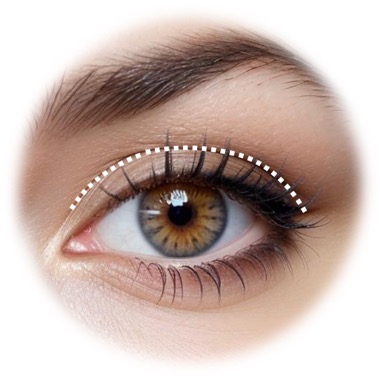
natuurlijk ogende resultaten
- Mijn vakkundig uitgevoerde ooglidcorrecties zorgen voor hoogwaardigenatuurlijke resultaten, geen 'verraste' of 'bange blik'. U zult erfrisser en jonger uitzien.
- De resultaten van een bovenooglidcorrectie houden 10-15 jaar aan,afhankelijk van hoe ernstig het ooglid hing vóór de operatie en uw leeftijd.
- Om een goed resultaat te behouden, zijn andere factoren zoals dieet, roken enalgehele gezondheid van belang.

Natuurlijke oogverjonging: Voor en Na
Tijdlijn / Werkwijze
Samen zullen we uw wensen bespreken. Geleid door uw unieke voorkeuren zal ik uw gezicht nauwgezet analyseren. Op basis van uw wensen en de nuances van uw gezicht zullen we de verschillende behandelopties doornemen. Vertrouwen is essentieel voor mij, en daarom zal ik ruim de tijd besteden aan het beantwoorden van uw vragen, het bespreken van het traject, waarbij ik de verwachte resultaten en eventuele risico’s transparant bespreek. Het is belangrijk om op één lijn te zitten! Mogelijke operatiedata en offertes worden gegeven door mijn assistent-schoonheidscoach.
Onze toewijding aan discretie, uw veiligheid, comfort en uitstekende resultaten drijft ons ertoe u uitgebreide begeleiding te bieden in de dagen voorafgaand aan uw ooglid correctie en de cruciale herstelperiode die volgt. Een medische evaluatie en pre operatief medicatieadvies zorgen voor een soepele operatieve ervaring. Aanpassingen in levensstijl zoals gehydrateerd blijven en het vermijden van roken en overmatig alcoholgebruik, dragen bij aan sneller herstelen betere resultaten.
Operatie
Op de dag van de operatie zal ik u ontmoeten vóór de operatie om nogmaals samen de geplande ingreep door te nemen. In de meeste gevallen wordt de ooglidcorrectie uitgevoerd onder lokale verdoving, maar wanneer onder algehele narcose is het belangrijk om de pre-operatieve vasteninstructies op te volgen voor uw veiligheid tijdens de narcose. Trek comfortabele kleding aan en vermijd het dragen van make-up en sieraden. Als u wakker wordt, heeft u een verband en word u naar uw kamer gebracht om te herstellen. Een verpleegkundige staat paraat om u tijdens uw verblijf te assisteren.
Herstel
Meestal wordt een wenkbrauwlift uitgevoerd in dagbehandeling, tenzij uw gezondheid langere opname vereist. Geef uw lichaam voldoende tijd om te herstellen. Rust met uw hoofd omhoog en vermijd zware activiteiten in de eerste dagen na de operatie om uw herstel te versnellen. Volg het voorgeschreven medicatieregime en de huidverzorgingsinstructies nauwgezet. Dit bevordert genezing, minimaliseert ongemak en ondersteunt optimale litteken genezing. Blijf prioriteit geven aan een voedzaam dieet en blijf gehydrateerd. Het heeft de voorkeur om iemand aan uw zijde te hebben om uw overgang naar huis te vergemakkelijken en u te helpen met dagelijkse taken.
Samen met mijn toegewijde team sta ik voor u klaar om u bij elke stap te ondersteunen, van het eerste consult tot uw postoperatieve reis. Woon alle geplande vervolgafspraken bij. Deze bezoeken stellen ons in staat uw voortgang te monitoren, eventuele zorgen aan te pakken en u te begeleiden naar een succesvol herstel. Binnen de eerste 2 weken na de operatie worden wondinspecties en het verwijderen van hechtingen uitgevoerd. Na 3 weken komen we weer samen om uw herstel te beoordelen, en 6 maanden later zullen de littekens gaan vervagen, en is het een goed moment om uw transformatie te evalueren!
Plan een consult
Plan een discreet consult waarin we uw wensen bespreken en ik de mogelijkheden uitleg. Samen bepalen we of deze techniek geschikt is voor uw unieke situatie.
Facelift Kosten en Veel Gestelde Vragen

Facelift kosten variëren afhankelijk van de gekozen techniek en complexiteit. Tijdens je consult krijg je een transparante prijsindicatie op maat voor jouw situatie.

Dr. Verduijn biedt verschillende facelift technieken: van mini facelift tot volledige SMAS facelift. De keuze hangt af van je anatomie, leeftijd en gewenste resultaat. Tijdens consult adviseert hij de beste aanpak.

Na 2-3 weken ben je weer sociaal actief. Zwelling en blauwe plekken verdwijnen geleidelijk. Het definitieve resultaat van je facelift is na 3-6 maanden volledig zichtbaar.

De meeste vrouwen vanaf 45 jaar met tekenen van gezichtsveroudering zijn geschikt. Dr. Verduijn beoordeelt tijdens consult of een facelift, mini facelift of alternatieve behandeling het beste past.

Als hoofd Plastische Chirurgie LUMC en expert in facelift technieken combineert Dr. Verduijn academische excellentie met artistiek gevoel. Zijn boutique aanpak garandeert persoonlijke aandacht en discretie.

Dr. Verduijn's filosofie is natuurlijke verjonging met behoud van je eigen karakter. Zijn verfijnde technieken creëren resultaten die harmonieren met jouw natuurlijke uitstraling en persoonlijkheid.
Meer weten over deze behandeling?
Vraag vrijblijvend een consultatie aan met onze specialisten. Dokter verduijn staat je graag te woord voor een behandelplan op maat.
Boek een consultatieFrisse uitstraling rondom ogen herstellen
Het aanpakken van veroudering rond de ogen draait om het herstellen van natuurlijke verhoudingen. Het doel is niet om je gezicht volledig te veranderen, maar om de tekenen van veroudering terug te draaien. Je ogen worden weer het expressieve deel van je gezicht dat ze ooit waren.
Er zijn verschillende behandelingen die gericht zijn op het ooggebied. Voor overtollig huid op de bovenste oogleden kan een correctie worden uitgevoerd die de huid verwijdert en de natuurlijke oogplooi herstelt. Voor wallen en vetophopingen onder de ogen bestaat een behandeling die dit aanpakt zonder zichtbare littekens te laten. Voor een lage wenkbrauwstand kan de wenkbrauw worden verhoogd, wat de hele bovenste helft van je gezicht opener maakt.
Welke behandeling het beste bij je past, hangt af van je specifieke situatie. Soms is het voldoende om alleen de bovenste oogleden te behandelen. Andere keren is een combinatie nodig om harmonie te creëren. Het uitgangspunt is altijd: zo weinig mogelijk ingrijpen voor het beste resultaat.

Hoe ontstaat een lage wenkbrauwstand?
Een lage wenkbrauwstand is vaak een verborgen oorzaak van vermoeide ogen. Door zwaartekracht en veroudering zakken de wenkbrauwen geleidelijk naar beneden. Dit drukt extra huid op je oogleden en creëert een vermoeid of zelfs chagrijnig uiterlijk.
De verbinding tussen wenkbrauwpositie en oogverjonging wordt vaak onderschat. Wanneer de wenkbrauwen te laag staan, kan het verwijderen van overtollig huid op de oogleden alleen niet altijd het gewenste resultaat opleveren. De wenkbrauwen moeten eerst worden verhoogd om balans te creëren.
Symptomen van huidoverschot rond de ogen zijn: zware oogleden die je blik beperken, rimpels rond de ogen die dieper worden, verslapte huid die zich ophoopt in plooien, en een gevoel van spanning op je voorhoofd omdat je onbewust je wenkbrauwen optilt om beter te kunnen zien.
Het verschil tussen hangende wenkbrauwen en oogleden is soms moeilijk te herkennen. Beide kunnen tegelijk aanwezig zijn. Tijdens een consult wordt gekeken naar de positie van je wenkbrauwen, de hoeveelheid overtollig huid op de oogleden, en de algehele balans tussen oog en wenkbrauw. Alleen met deze analyse kan de juiste aanpak worden bepaald.

Balans tussen oog en wenkbrauw
De balans tussen oog en wenkbrauw is essentieel voor een frisse blik. Te veel focus op alleen de oogleden kan leiden tot een onnatuurlijk resultaat. Als de wenkbrauwen te laag blijven staan, blijft je blik zwaar, zelfs na behandeling.
Omgekeerd geldt hetzelfde. Wanneer alleen de wenkbrauwen worden verhoogd maar er nog veel overtollig huid op de oogleden aanwezig is, ontstaat er geen optimale verjonging. Het geheim ligt in het bekijken van het ooggebied als geheel. Elke persoon heeft een unieke anatomie en vereist een op maat gemaakte aanpak.
Tijdens het consult wordt nauwkeurig gekeken naar de verhoudingen in je gezicht. Hoe hoog staan je wenkbrauwen nu? Hoeveel overtollig huid is er op de oogleden? Is er vetophoping onder de ogen? Al deze factoren spelen mee in het advies dat je krijgt.
Het resultaat van een goed uitgevoerde behandeling is subtiel. Vrienden en familie merken dat je er fris uitziet, zonder precies te kunnen zeggen wat er veranderd is. Je voelt je zelfverzekerder omdat je uitstraling weer aansluit bij hoe je je vanbinnen voelt.
